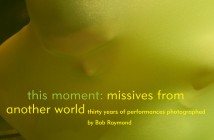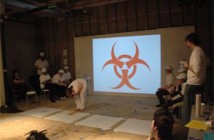When Pope John Paul II died , there sounded in the city of Warsaw the air-raid, civil defense siren for over one minute. I lost count of how many iterations there were, perhaps fifteen. It must have been slightly chilling for anyone over 65, awakening the memory of bombings. But the fact of using the air raid warning system to announce the death of the Pope seemed an unfortunate way to have to do it because of these mixtures of meaning. Perhaps what is at issue here is - how to communicate, with a sound signal - to everybody at once, to the community?
In America there is concern that some civil defense warning systems do not work - and it is hard to tell since many of them have never been tested. And how do you alert everyone that you are going to test it? How would we know what they sounded like even if we heard them? I believe Schafer puts civil defense sirens in the category of "sacred noise" - those sounds that are special because they are purposefully withheld and rarely heard. In the town I grew up in testing was not a problem - it's civil defense alarm sounded every evening at 6:15, one blast of a big, bassy horn, in the harmonic interval of a major third (g, b).
Historically you could say that church and school bells would have communicated in the past what the sirens did last night to the local community. But what is also clear is that the sound environment has gotten noisier and bells cannot be heard for a fraction of the distance that they once were. The progression in sound therefore from the simple membranophone of the bell to the mechanically-driven aerophone of the siren represents a response to the rise in the environment of the ambient sound pressure level. And a good example of the passing of the bell, forever more, occured during World War II, when faced with a shortage of metal, Hitler ordered all the church bells removed so that they could be melted down to build more tanks...
Reconsidering the siren last night, maybe its call was appropriate: that in the swift ascent upwards in pitch, the long, sustained tone, and the gradual decay in amplitude and corresponding pitch sliding down, it could be heard as one long cry, of one long breath...
- A view of the Warsaw town square.
- Pope John Paul II in Warsaw.
All images were found using Google.






